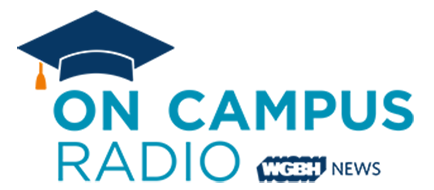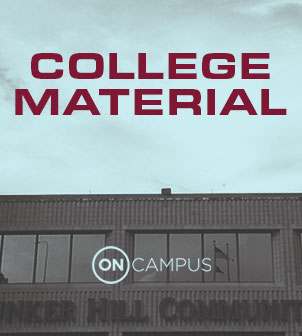
Jamal Aden chats with his friends following this year's Boston Scholars ceremony in June. Credit: Kirk Carpezza / WGBH
A deal that would tie student loan interest rates to the financial markets is heading to President Obama’s desk for his signature.
Meanwhile, a new report from Georgetown University released on Wednesday suggests higher education is exacerbating white racial privilege in America.
Researchers at Georgetown found that while it’s getting easier to access colleges and universities, at the same time racial polarization on campus is, in fact, growing.
For Jamal Aden’s parents, it was never a foregone conclusion that their son would go to college. The son of Somali refugees, Jamal was born in a Kenyan refugee camp. He says conditions were rough.
“The food supply was low, but we survived and eventually – finally – got to move to America,” Aden said.
At first, the family bounced around the northeast – to Rochester, New York; then Lynn, Massachusetts; and finally Boston, where Jamal attended public schools.
His dad, Hussein, worked a series of construction jobs, but when the construction boom went bust, he found himself unemployed. And he wondered how his son could go to college.
“It always lingered in my mind because I knew that we wouldn’t be able to pay for college,” Hussein said.
Jamal sought inspiration from his high school teachers, who told him he’d need to show extraordinary initiative to succeed – to get ahead and to earn a scholarship.
“I started preparing: taking honors classes, AP classes, and that’s where my spring board started,” Jamal said.
Despite scholarships for Hispanic, African-American and low-income students like Jamal, these students are increasingly concentrated in the least well funded colleges that are less likely to be able to help them get ahead. That’s according to the new report from Georgetown’s Center on Education and the Workforce, which finds “white flight from city centers to better neighborhood schools has finally reached America’s ivy-covered college campuses.”
Georgetown’s Anthony Carnevale says the nation’s higher-ed system is one of "racially separate and unequal institutions."
“Access to the most selective colleges is increasing the intergenerational transmission of white racial privilege," Carnevale said. "That wasn’t the case 30 years ago, but it is now that your education is pretty much determined by your parents’ education, more here than almost anywhere else.”
Carnevale co-authored the report, which looked at 4,400 institutions across the country. He says its findings should concern all Americans.
“Demography is destiny and that is good news in the long-term and bad news in the short-term,” Carnevale said.
Since 1995, Carnevale points out, 80 percent of new white students have gone to top-tier colleges, while 70 percent of the new African-American and Latino students have gone to two-year community colleges.
At a time when higher education is one of the only ways to get ahead, America has the lowest upward mobility in education compared to other developed nations.
But demography indicates in the next 30 years the majority of American paychecks will go to Latinos and African Americans, so Carnevale predicts a major shift in the nation's higher-ed landscape.
“He who pays the piper calls the tune," he said. "So I think we can envision a time when voters will be much more sympathetic toward investing in a diverse population.”
But just sympathy and investment is not necessarily the fix.
“Demography is not destiny," said Joe Yeado, a research analyst with the Education Trust, which ranks schools based on their success in closing achievement gaps between their white and minority students.
He says programs that support academic advising and orientation for black and Latino students are increasing access and boosting retention rates.
“They create a culture of completion on their campuses where everyone from tenured faculty down to resident assistants in the dorm have a hand in students’ success," he said. "It doesn’t always take large sums of resources but it does take a level of commitment.”
Over the past ten years, Boston University’s graduation rate between black and Latino and white students has narrowed. Black students graduate about four percentage points lower than their white peers. Latinos graduate at nearly even rates.
Among this year’s scholarship winners is Jamal Aden. When he got his acceptance letter this spring, Jamal was thrilled.
“I’m going to BU for free!" he said. "I walked around my house. I was like, ‘Mom, Dad, I got this. Don’t worry. You don’t have to pay anything!’ They were like, ‘What are you talking about?’ I was like, ‘Just don’t worry I this!’”
After this year’s scholarship ceremony, Jamal snacks on finger foods and chats with his friends. A huge smile spreads across his face.
“I’m ready for college," he said. "I’m ready to do all the opportunities they throw out at me. I’m ready for the study abroad programs. I’m ready for the professors – asking questions in class. Just can’t wait.”
Jamal plans to study international relations so he can help students with similar backgrounds get ahead.
Scholarship programs like the one at BU provide a certain level of access and opportunity to a relatively small number of students, but higher-ed experts agree: If America is going to close its achievement gap, the country needs to find more jobs for low-income parents and to bring the cost of college down.










